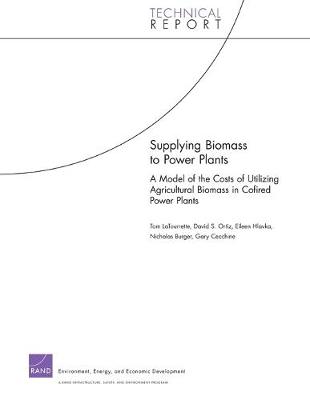"U.S. power plants seek to diversify their fuel sources. Biomass energy is a renewable resource, generally with lower emissions than fossil fuels, and has a large, diverse base. To make decisions about investing in a facility that utilizes biomass, prospective users need information about infrastructure, logistics, costs, and constraints for the full biomass life cycle. The model developed in this work is designed to estimate the cost and availability of biomass energy resources from U.S. agricultural lands from the perspective of an individual power plant. As an illustrative example, the model estimates the availability and cost of using switchgrass or corn stover to power a cofired power plant in Illinois and estimates the plant-gate cost of producing biomass fuel, the relative proportions of switchgrass and corn stover, the mix of different land types, and the total area contributing the supplied energy. It shows that small variations in crop yields can lead to substantial changes in the amount, type, and spatial distribution of land that would produce the lowest-cost biomass for an energy facility. Land and crop choices would be very sensitive to policies governing greenhouse-gas emissions and carbon pricing, and the model demonstrates important implications for total land area requirements for supplying biomass fuel"--Provided by publisher.
- ISBN10 0833052187
- ISBN13 9780833052186
- Publish Date 28 March 2011
- Publish Status Active
- Publish Country US
- Imprint RAND
- Format Paperback (US Trade)
- Pages 74
- Language English
